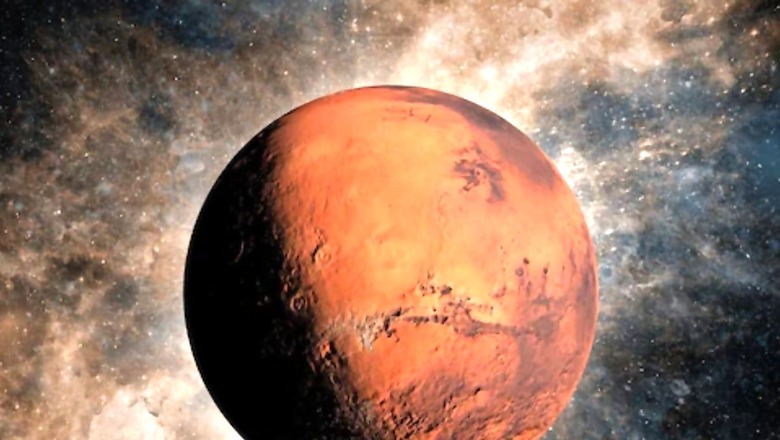
views
Scientists from various parts of the globe have been researching the possibilities of life on the planet Mars for many years now. According to reports, some scientists have discovered something that has left people dumbstruck. In a recent development, a NASA rover accidentally climbed into a rock, which caused it to crack. What came out from the rock left the scientists surprised. Let us read more about this amazing discovery here.
According to media reports, NASA’s Mars rover found some rare crystals on the planet Mars. In the month of May, while the rover was exploring the area named Gediz Vallis channel, it climbed onto a small rock. The rock broke down and some crystals came out of the rock. NASA reported that the scientists examined the pictures sent by the rover and found that the yellow-coloured crystals are mainly made of sulphur. This is the first time scientists managed to find such a thing on the planet.
Scientists earlier suspected the presence of pure sulphur on the planet, Mars but failed to find any constructive evidence to confirm their suspicion. Ashwin Nasavada, a scientist at NASA’s Jet Propulsion Laboratory in South California said to reporters, “Finding this area where we found pure sulphur was like finding an oasis in the desert. This thing has surprised everyone and now we have to find the theory of its presence on the planet.”
The scientists believe that some surrounding rocks may also contain sulphur. NASA mentioned that they are set to conduct further study in that area. Scientist Ashwin Nasavada further said, “The discovery is strange and an unexpected thing for all of us. This type of discovery makes planetary exploration so exciting.” The rover has been exploring the Gediz Vallis channel area for the past few months now. As per NASA’s statement, this discovery might significantly aid efforts to establish human population on Mars.
It should be noted that sulphur is one of the major elements that contribute to the existence of life on Earth. This discovery has opened up a brand new path for scientists as they continue their efforts to establish human colonies on the planet.

















Comments
0 comment